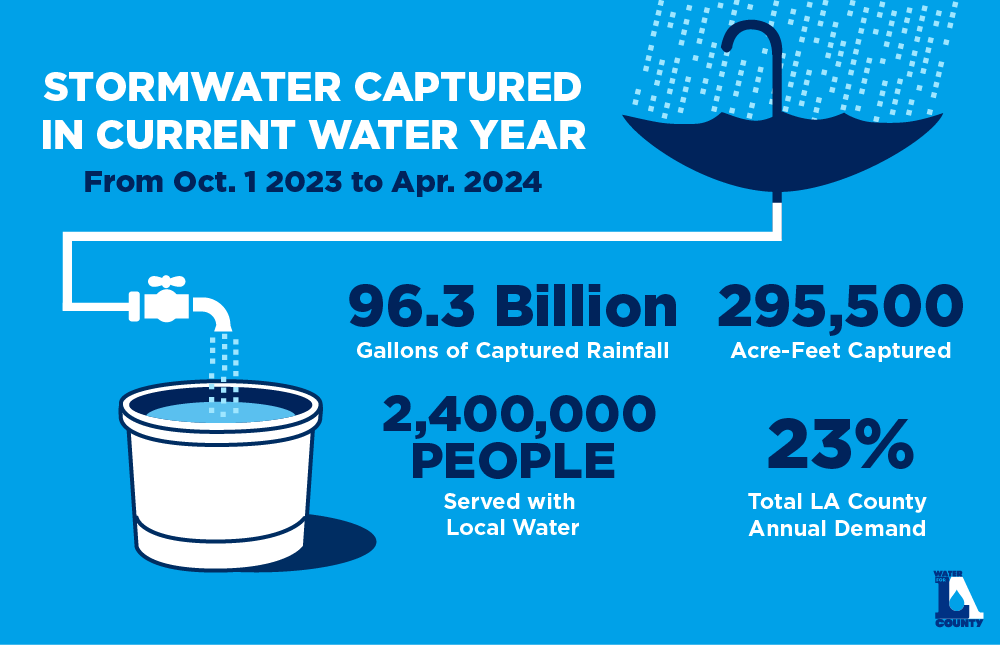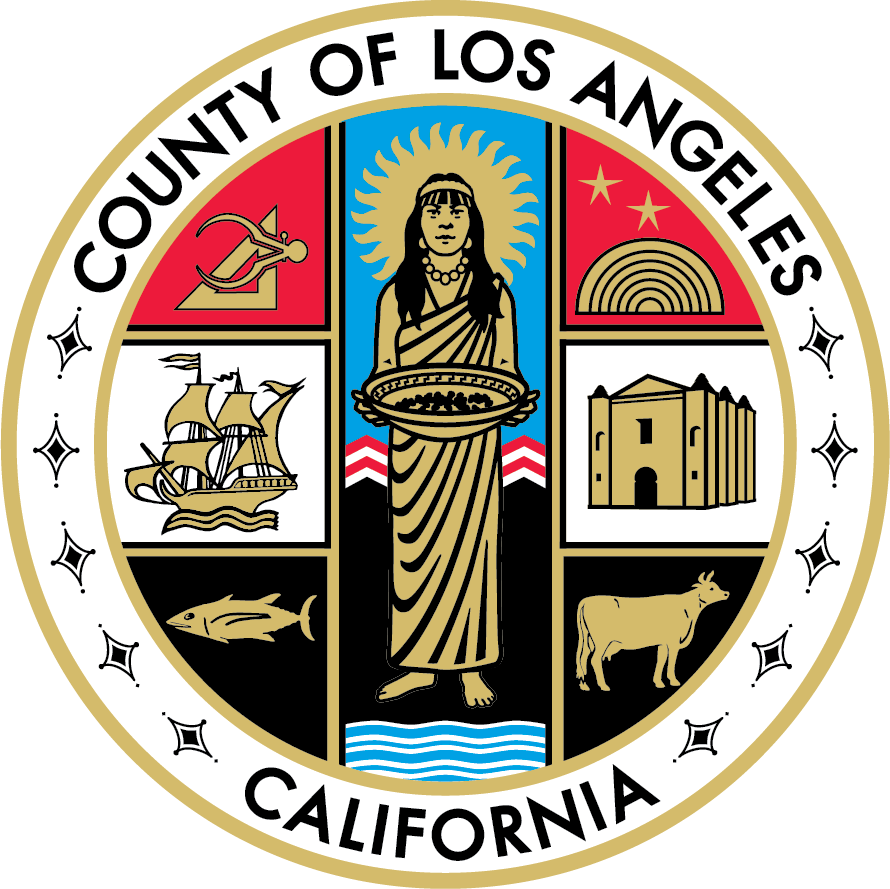ANGELENOS TEAMING UP
Over 204 billion gallons of stormwater was captured at LA County stormwater facilities last year. Enough for more than 5 million people:
Even better…that’s enough water to cover attendance at 89 sold-out Dodger’s games at Dodger Stadium.

What is
WATER FOR LA?
Water for LA is a program to transform LA County residents into empowered, informed water advocates. Learn more about Water for LA’s mission and vision for LA County here.
There are 7.6 Million
Vehicles in LA
washing 1 Vehicle
in the driveway uses
100 Gallons of water.
How much stormwater was captured during the 2022-23 storm season?
Over 204 billion gallons of stormwater was captured at our groundwater facilities. That’s enough water for 5 million LA County residents for one year! Learn more about what the County is doing to protect your water supply here.
How can I keep our water clean?
By taking action, you can help protect our water quality. Picking up litter, avoiding harmful pesticides and keeping your cars fluids off the street can make a huge difference! Get more ideas here.
Where does our water come from in LA County?
In LA County, roughly 2/3 of our water comes from outside sources via aqueducts that import the water. The remainder comes from local sources such as groundwater basins, recycled water, and stormwater. See The LA Water Journey for more information.
How much rain did LA County receive during the 2022-23 storm season?
A total of 33.4” of rainfall was recorded at the Downtown Los Angeles rain gauge during the 2022-23 storm season. Learn about LA County’s diverse system of watersheds here.
What is weather whiplash?
Weather whiplash is a weather phenomenon classified by extreme and rapid seasonal changes that range from extremely dry conditions to extremely wet, believed to be caused by climate change. Learn more about LA County’s water history here.


